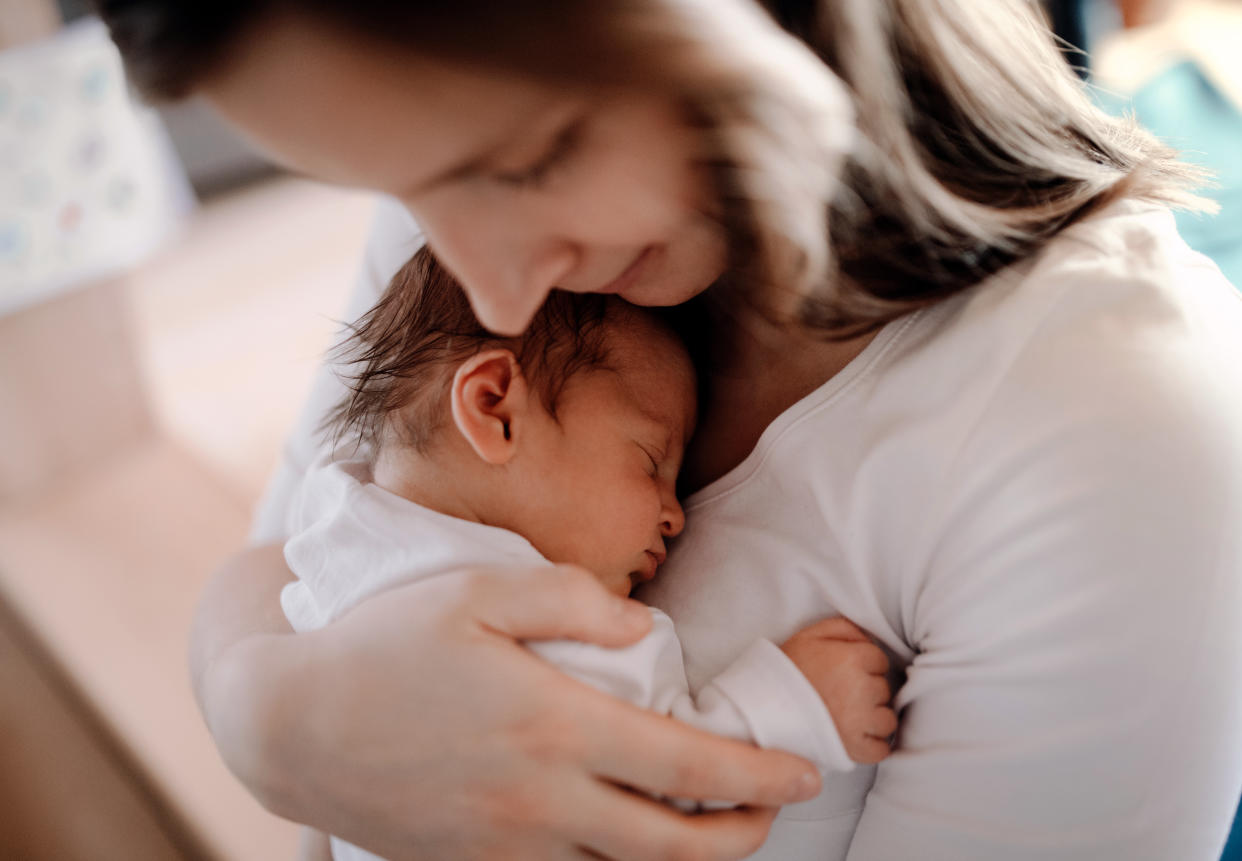Babies left to self soothe could become 'hardened'

Letting babies self soothe could leave them ‘hardened’, a GP has warned.
Dr Rosie Knowles, from Sheffield, believes holding back on affection causes babies to have a warped view of the world.
And while some worry too many cuddles will make their child “clingy”, the medic insists the opposite is actually true. Snuggling up with your bundle of joy tells the newborn “their needs will be met”, she explains.
READ MORE: Skin-to-Skin 'Kangaroo-Style' Care May Benefit Newborns' Health
Many well-intentioned parents leave their babies to cry in the belief it will teach them to “self settle”.
Dr Knowles argues, however, infants are unable to rationalise that no one will be coming to comfort them.
“Newborns don’t have the cognitive development to self soothe,” she told Yahoo UK. “In the first few months they go through the ‘fourth trimester’, where they need a level of contact that mimics the womb.
“Cuddles tell them they are safe and their needs are being met.
“Otherwise, their brains will be wired to think the world is hostile.
“Cuddling babies helps them become more confident in later life.”
READ MORE: Maternal singing calms preemies
While some believe children should be taught to be “independent” from a young age, Dr Knowles insists frequently hugging your baby will not make them clingy.
“Giving them a secure base lets a child explore the world rather than worrying if you’re there,” she said.
Crying is your baby’s well of telling you it needs comfort and care, according to the NHS.
Unable to speak, infants wail to let you know they are hungry, too hot or have a dirty nappy.
Babies even cry out if they are bored, overstimulated or simply want a cuddle.
Once considered “new age”, the benefits of skin-to-skin contact - or kangaroo care - are now well known.
Scientists from the Nanfang Hospital of Southern Medical University in Guangzhou, China, looked at more than 100 babies delivered via C-section, half of which were laid on their father’s chest immediately after birth.
Results reveal those who experienced skin-to-skin contact had more stable heart rates, cried less and took to breastfeeding quicker.
According to Unicef, kangaroo care “stimulates digestion and an interest in feeding”, while also releasing hormones that “support breastfeeding”.
A team from the Pontifical Xavierian University in Columbia even found the benefits of cuddles are evident 20 years on.
Out of nearly 500 people, those with “protective” and “nurturing” parents were less likely to skip school, act aggressively or be “socially deviant” in later life.
READ MORE: Stroking your baby's skin could help lessen the pain felt during a blood test
And it’s not just babies who benefit. Skin-to-skin contact releases the “bonding hormone” oxytocin, which helps ward off post-natal depression in new mothers.
However, holding a baby all day may not be practical. Dr Knowles therefore recommends a well-fitting carrier or sling.
These may also enable new mothers to get out the house during the early isolating days of parenthood.
“Slings give you your life back,” Dr Knowles said. “They let you get the bus, play the violin, whatever.”
Carrying a baby on your front may sound backbreaking, however, the medic insists carriers can be perfectly comfortable if fitted properly.
“Buying a pair of shoes two sizes too small and cramming your feet into them would also be uncomfortable,” she said.
“The baby should sit on the chest as if it was being cuddled.”
“A good posture then activates the core.”
For those who are struggling, “sling libraries” across the UK help new parents find a carrier that suits them.
Shop the baby carrier recommended by this article’s expert
Baby Carrier Mini by Baby Björn from Baby Björn | £79.99

Yahoo is committed to finding you the best products at the best prices. We may receive a share from purchases made via links on this page. Prices were correct at the time of publication.

